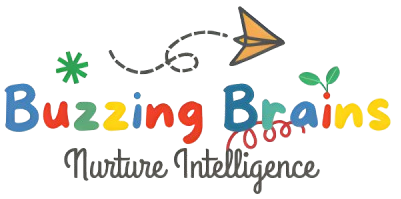Developing Left and Right Brain Synchronization in Children
Left and right brain synchronization, also known as interhemispheric communication, is the ability of the two hemispheres of the brain to work together in harmony. This synchronization is essential for children’s cognitive, emotional, and social development.
What is Left and Right Brain Synchronization?
Left and right brain synchronization involves the ability of the:
– Left brain: Logical, analytical, and detail-oriented
– Right brain: Creative, intuitive, and holistic
to work together seamlessly.
Why is Left and Right Brain Synchronization Important?
Developing strong left and right brain synchronization is crucial for children’s:
– Cognitive development: Improved problem-solving skills, memory, and concentration
– Creativity and innovation: Increased creativity, imagination, and innovative thinking
– Emotional regulation: Enhanced emotional intelligence, self-awareness, and self-regulation
– Social relationships: Better communication skills, empathy, and social understanding
Repercussions of Not Having Strong Left & Right Brain Sync
- Difficulty with cognitive flexibility: Children may struggle to switch between different mental tasks or adapt to new information.
- Impaired creativity and problem-solving: Left and right brain sync is essential for generating innovative ideas and solving complex problems.
- Trouble with emotional regulation: Children may struggle to manage their emotions, leading to mood swings and behavioral issues.
- Difficulty with multitasking: Children may find it challenging to perform multiple tasks simultaneously, impacting their productivity.
Effects of Lack of Strong Left & Right Brain Sync in Different Age Groups
2-5 years
- Delayed cognitive development: Children may struggle with basic cognitive skills, like attention, memory, and problem-solving.
- Difficulty with social interactions: Children may have trouble understanding social cues, leading to difficulties with friendships and relationships.
- Increased reliance on others: Children may need assistance with daily activities, impacting independence.
5-8 years
- Struggles with academic subjects: Children may find it difficult to excel in subjects that require both logical and creative thinking, like math and language arts.
- Difficulty with critical thinking: Tasks like evaluating information, making decisions, or predicting outcomes may be challenging.
- Frustration with creative activities: Children may become frustrated with activities that require imagination and creativity, like art or music.
8+ years
- Impact on academic performance: Strong left and right brain sync is essential for academic success, particularly in higher-level subjects like science, technology, engineering, and math (STEM).
- Difficulty with complex problem-solving: Children may struggle to apply critical thinking and creativity to real-world problems.
- Increased risk of emotional and social difficulties: Poor left and right brain sync can lead to feelings of inadequacy, anxiety, and social isolation.
Activities to Develop Left and Right Brain Synchronization
Here are some fun and engaging activities to help develop left and right brain synchronization in children:
– Brain teasers and puzzles: Engage your child in brain teasers and puzzles that challenge both logical and creative thinking.
– Art and creativity: Encourage your child to express themselves through art, music, and other creative activities.
– Mindfulness and meditation: Practice mindfulness and meditation with your child to enhance interhemispheric communication.
– Physical activities: Engage your child in physical activities that require coordination and balance, such as yoga, tai chi, or dance.
– Reading and storytelling: Read stories and encourage your child to use their imagination to visualize and create their own stories.
Tips for Parents
As a parent, you can support your child’s left and right brain synchronization development by:
– Encouraging activities that challenge both logical and creative thinking
– Practicing mindfulness and meditation with your child
– Providing opportunities for physical activity and exercise
– Modeling healthy brain habits and lifestyle choices
– Encouraging creativity and self-expression
Age-Specific Left and Right Brain Synchronization Development
Here are some age-specific tips to support left and right brain synchronization development:
– 2-5 years: Engage your child in play-based activities that challenge both logical and creative thinking.
– 5-10 years: Encourage your child to participate in physical activities that require coordination and balance.
– Beyond 10 years: Engage your child in more complex activities that challenge both logical and creative thinking, such as brain teasers and puzzles.
Conclusion
Left and right brain synchronization is a vital skill that plays a crucial role in children’s cognitive, emotional, and social development. By providing opportunities for activities that challenge both logical and creative thinking, and using strategies to support interhemispheric communication, you can help your child develop strong left and right brain synchronization skills.
